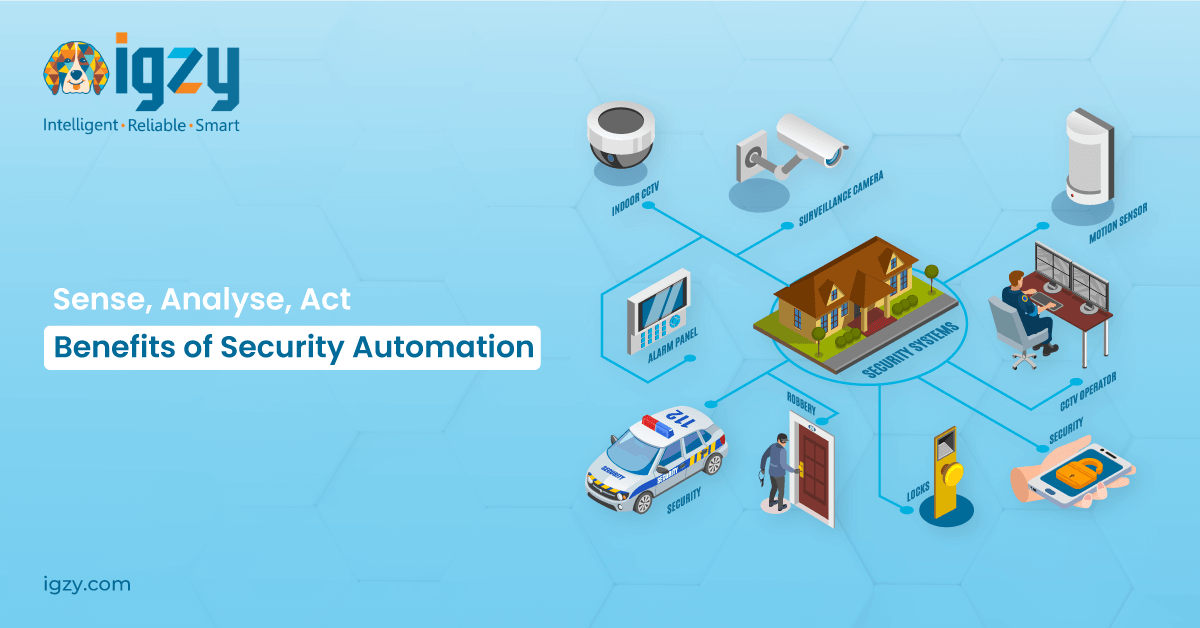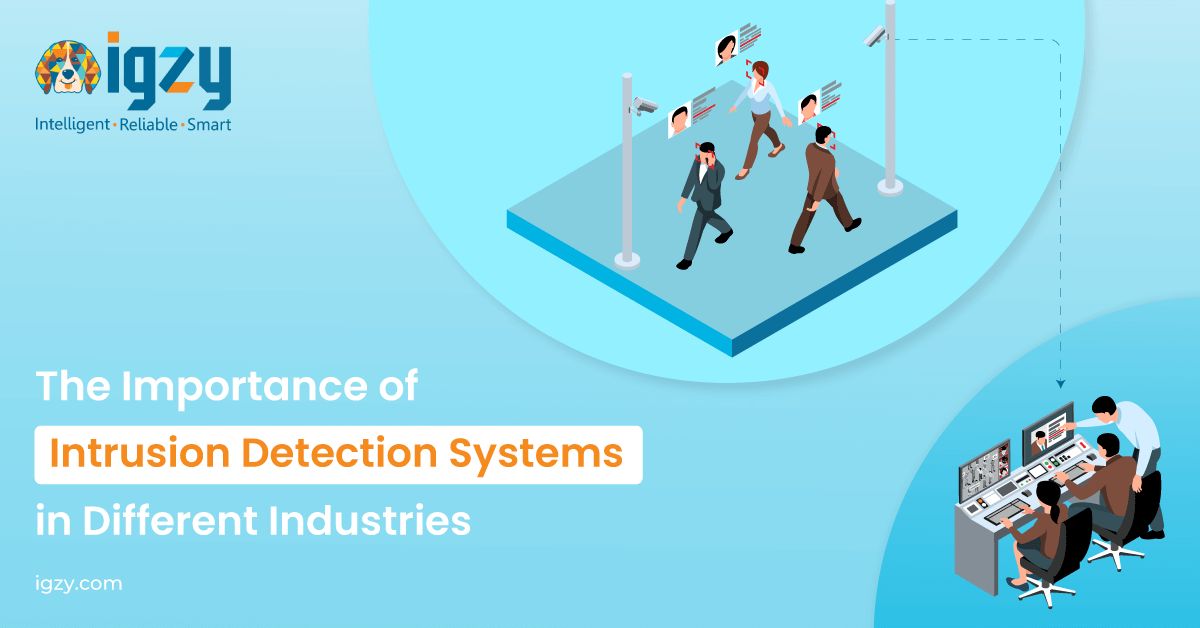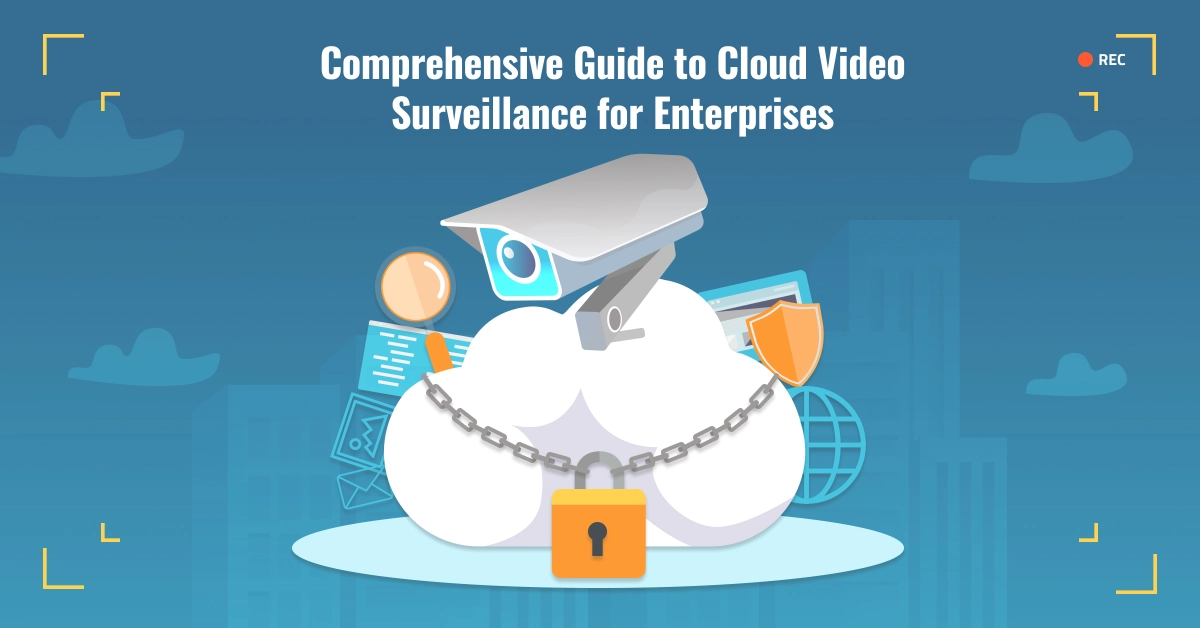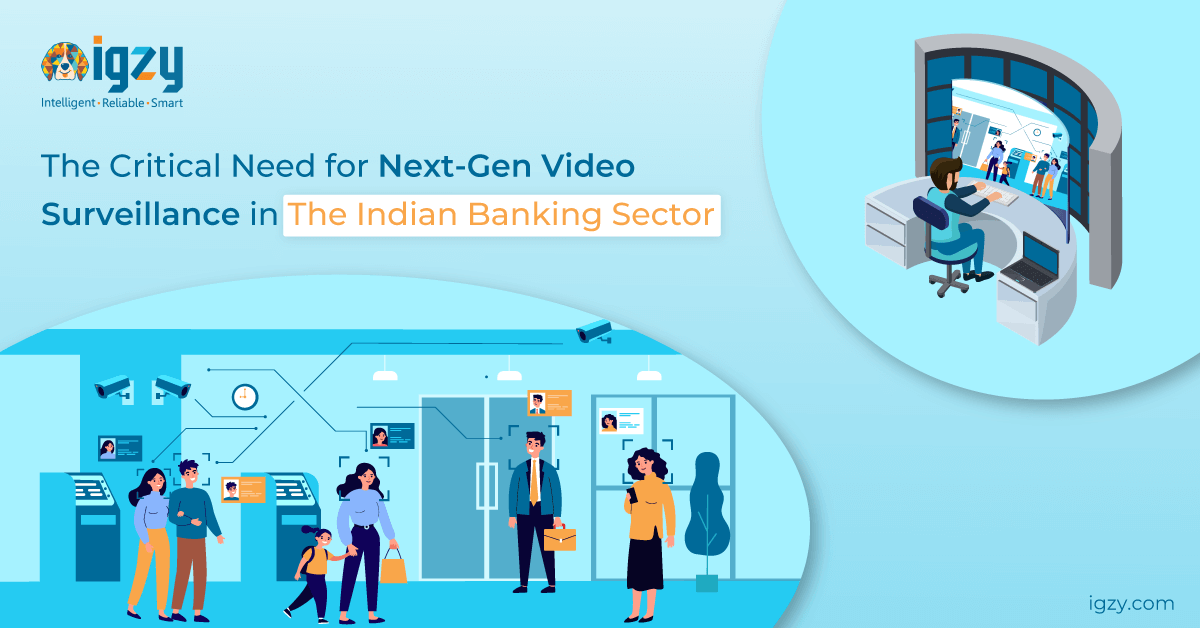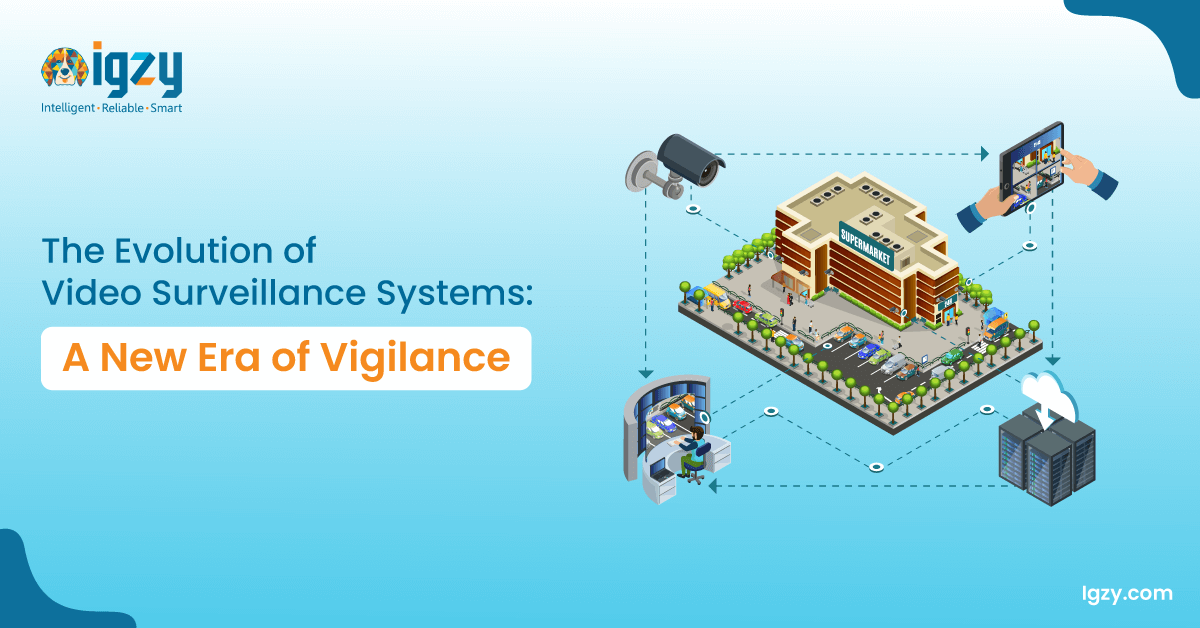The 3-Factor Train Towards Enterprise Video Surveillance
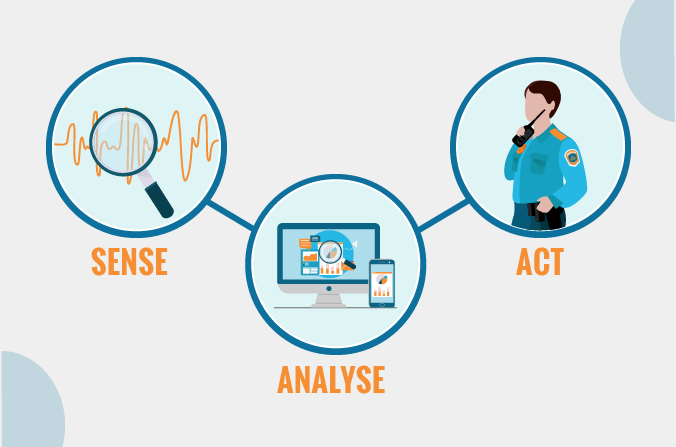
Table of Contents
Enterprise surveillance depends on multiple factors, ranging from the kind of business and assets being dealt in, SOPs to be maintained on-site, recurring threats to security, and other associated factors.
To simplify the surveillance formula for any enterprise, we recommend following a three-factor train: Sense – Analyse – Act.
In this blog, we will dive into the basics of these factors, their constituents, and how they can improve the surveillance of your enterprise.
SENSE
To be clear, we aren’t referring to your 5 senses. We are talking about the senses beyond human detection, the aspect that IoT and AI innovations have taken over.
While upgrading the security of your business, you should depend on eyes that can see across the site from an eagle’s view. Smart cameras and sensors installed on-site can capture every activity taking place in their jurisdiction and monitor your enterprise for any suspicious activity. Unlike analogue systems with limited area coverage at a lower image clarity and a rigid structure, IP CCTV systems can cover more expansive landscapes at a high footage clarity. With PTZ cameras, you can monitor different angles for an area that would otherwise require multiple cameras. Motion sensors around the perimeter and access control systems around restricted areas can detect any unauthorized movement that could be a potential threat to the enterprise.
An enterprise video surveillance solution responsible for sensing discrepancies includes CCTV installations and a wide variety of sensors.
IP CCTV Cameras:
These devices are responsible for recording video evidence of events, either for the purpose of internal audits or proof of accidents and threatening situations.
Motion sensors:
These devices detect movement, usually around the facility’s perimeter, especially after work hours. Similar devices can be used across restricted areas and around server rooms to detect suspicious activity and support your enterprise security.
Access control devices:
Devices like keyless locks, accessible via an authorized OTP or Bluetooth connectivity, can detect when someone enters an incorrect OTP. The lock is connected to mobile applications that have logs of every time
Environmental sensors:
Devices like temperature & humidity sensors and air quality sensors detect fluctuations in the overall environment of the enterprise. Depending on the type of business and assets one deals in, these sensors can act as an essential safety measure for you.
Warehouses, for instance, especially commodity warehouses, require the maintenance of predefined temperature settings.
Hospitals require controlled atmospheres, fluctuations in which case can cause large-scale damage. An increase in oxygen levels in certain wards can be extremely harmful (due to the presence of flammable liquids).
Facilities requiring controlled environmental factors for efficient operability can use these sensors to detect fluctuations beyond predefined thresholds.
Energy Meter:
These devices can help monitor the electricity consumption across a single site or multiple.
Fire & smoke sensors:
These sensors are an integral part of every security system, ensuring that your assets and people are not put in harm’s way due to faulty wiring or fire outbreaks due to overheated machinery.
Analyze
Following the sensory action of detecting suspicious activities or fluctuations in predefined parameters, all the data is then analyzed.
Detection alone is not enough. All the data collected must be analyzed in real-time, either by the recording devices or on a platform. IP cameras and sensors are capable of detecting and analyzing the data to a great extend.
All the data is then sent over to the cloud-based platform, where further dissection of data occurs.
Edge device-based analysis
Your IP cameras can be trained to count the people entering your premises, divide them based on their gender, their uniform, or whether they are wearing their protective gear or not.
Based on predefined parameters, alerts can be sent to escalations as well as the command center personnel for verification of incidents.
Smoke and fire sensors can detect the presence of smoke, analyze the situation and send alerts to escalations for hazard prevention.Platform-based analysis
Platform-based analytics help decipher more significant insights into the enterprise’s overall performance. Data from the shutter sensors can give you insights into the adherence to the site’s daily opening and closing times. This data can be found on the platform, giving daily, weekly and monthly updates into the SOP compliance of employees.
Energy consumption patterns can be found on the platform, with daily, weekly, and monthly usage patterns. You can find insights into fluctuations in consumption and problem areas via these reports.
Manual analysis
While your camera and platform can detect and analyze a majority of data, a command center personnel is responsible for validating these events. Analyzing situations from the human perspective enables you to be carefree when it comes to the security of your site. This also reduces false alarms by a significant percentage, requiring professional assistance only after the situation has been certified by a command center staff member.
Act
Depending on the incident, the alert received and validation of the situation, the command center personnel can decide their route of action.
Alarms:
The security alarm once turned on due to suspicious detection can only be turned off after validation from the security personnel. In case of theft, the alarm acts as a deterrent by intimating the intruder that their activities haven’t gone unnoticed.
Two-way audio:
The command center personnel can then use the two-way audio system to communicate with the intruder and deter their activities. This can also help them ensure that the person on-site is an intruder and not an employee coming in after-hours or during the early hours for miscellaneous reasons.
Contact local authorities:
Depending on the type of situation at hand, the employee can contact associated authorities if required. The command center personnel can contact the fire department or local police, depending on the type of emergency.
If the alert raised is false, the command center can leave their comment on the platform and close the ticket.
Some takeaways
Sense, Analyse & Act is an easy 3 step formula towards complete enterprise video surveillance. From detecting discrepancies, analyzing effects, and taking the necessary action, you can strengthen your premise security following these basics.
IGZY follows these three factors to maximize your enterprise video surveillance. Our smart devices backed by a state-of-the-art cloud platform support the detection and analysis of all incidents while our certified command center takes action where needed.
To know more about our solution and how it can support your enterprise security requirements, click here!

